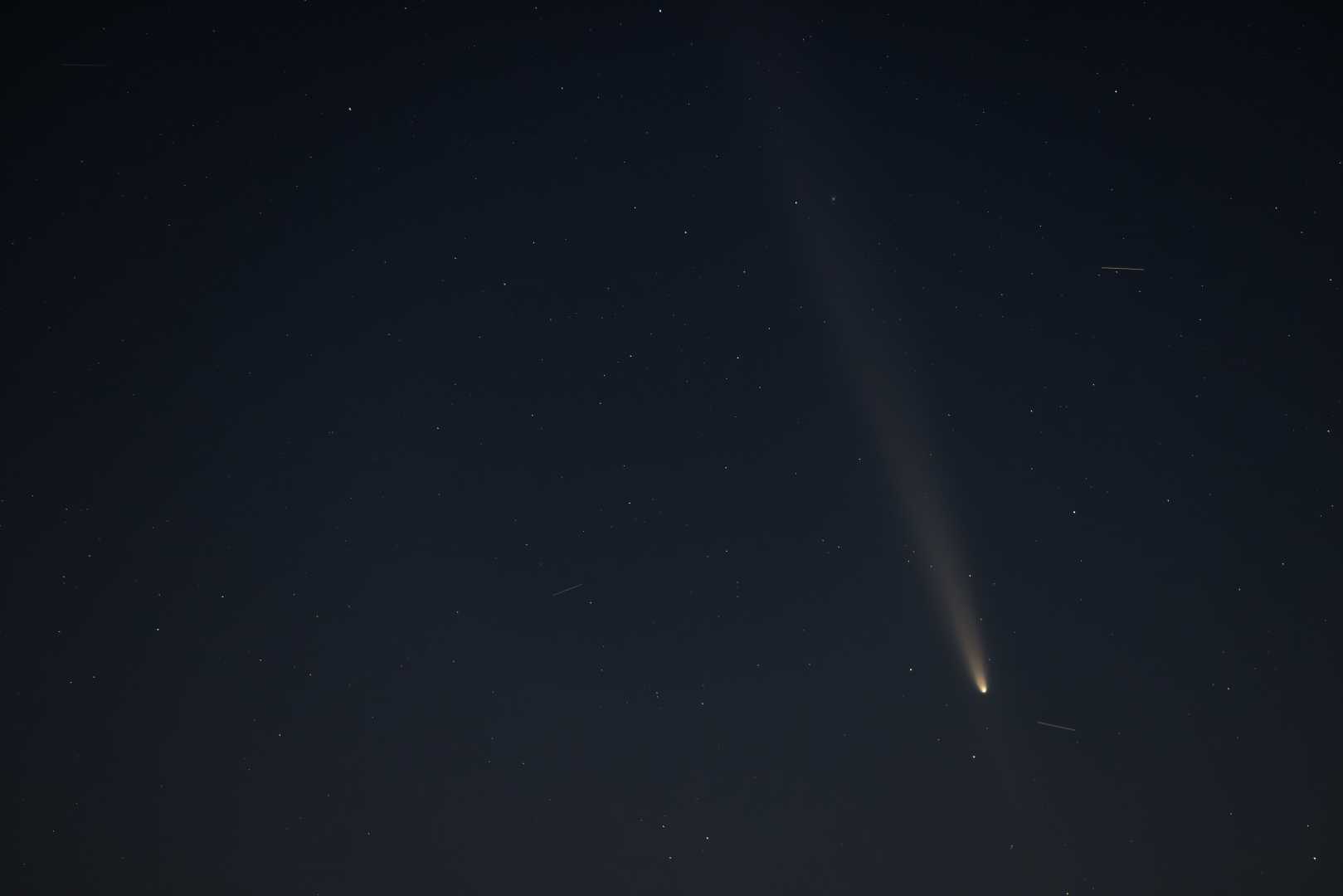News
Final Chance to Catch the “Comet of the Century” in the Night Sky

This week presents the last opportunity for stargazers across the globe to observe the “Comet of the Century,” Comet Tsuchinshan-ATLAS, before it disappears for 80,000 years. The comet, also known as C/2023 A3, has been visible in the night skies and reached its peak brightness on Monday.
Simon King, Lead Weather Presenter, noted that while the comet’s brightness will begin to fade, it remains visible on Tuesday night, weather conditions permitting. This comet has generated significant interest due to its exceptional brightness and visibility. Many observers, including BBC Weather Watchers, captured images of the comet as it graced the skies on Monday.
The optimal viewing time for the comet is around sunset, which is expected between 18:00 and 18:30 BST across the UK. Observers should look towards the western horizon to spot the bright comet, accompanied by a faint streak. A clear, unobstructed view of the sky is essential for the best possible viewing experience.
However, weather conditions across the UK might pose challenges, as cloudy skies and rain are expected in many areas on Tuesday night. North-east Scotland and East Anglia are likely to experience occasional breaks in the cloud cover, while other regions might see scattered clear spots. The Met Office has even issued a yellow alert for severe rain in south-west England and Wales.
Astronomers advise that around 45 minutes after sunset, Comet Tsuchinshan-ATLAS will be positioned in the west, about 37 degrees from the sun, in the constellation Serpens. This Wednesday evening, when skies are expected to clear, presents another chance to see the comet, visible for about two hours after sunset.
For those planning to view the comet, it is also worth noting that the “Hunter's Moon,” a bright supermoon, will rise in the east. While this might affect visibility slightly, the comet’s brightness should still make it discernible. Sky-watchers can also use the bright planet Venus and the star Arcturus in the Boötes constellation as reference points to locate the comet between them.
Tsuchinshan, referring to China’s Purple Mountain Observatory in Nanjing that discovered the comet in January 2023, has stirred excitement among astronomy enthusiasts globally. Dr. Qicheng Zhang of Lowell Observatory, who has been monitoring the comet, explained the proper pronunciation to aid enthusiasts in identifying the spectacle accurately.












